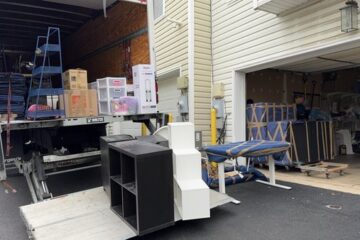How to Repair Cracks in Epoxy Terrazzo Floors

Epoxy terrazzo
Epoxy terrazzo floors are known for their durability, longevity, and stunning aesthetic appeal. However, over time, even the most well-maintained floors may develop cracks. These cracks not only compromise the visual appeal of your flooring but also pose potential hazards. Fear not, though, as this comprehensive guide will walk you through the step-by-step process of repairing cracks in epoxy terrazzo floors, restoring them to their former glory.
Understanding Epoxy Terrazzo Flooring:
Before diving into the repair process, it’s essential to understand the basics of Concrete Repair flooring. This type of flooring consists of a mix of epoxy resin and various aggregates, such as marble, glass, or quartz chips. The result is a smooth, seamless surface that is not only visually appealing but also highly durable. However, despite its robust nature, epoxy terrazzo is not immune to the effects of time, heavy foot traffic, and environmental factors.
Identifying the Types of Cracks:
Cracks in epoxy terrazzo floors can occur for various reasons, including structural movement, settling, or improper installation. It’s crucial to identify the types of cracks before attempting any repairs. Hairline cracks, spiderweb cracks, and larger structural cracks each require different approaches.
Gathering Essential Tools and Materials:
Before embarking on the repair process, gather the necessary tools and materials. This typically includes safety gear such as gloves and protective eyewear, a dust mask, a diamond blade or grinder, epoxy filler, mixing containers, a trowel, and a floor finish compatible with epoxy terrazzo.
Preparing the Cracked Area:
Start by thoroughly cleaning the cracked area. Remove any debris, dust, or loose particles using a vacuum or a soft brush. For a more effective clean, consider using a mild detergent solution. Once clean, use a diamond blade or grinder to widen the crack slightly, creating a V-shaped groove. This step ensures better adhesion for the epoxy filler.
Mixing and Applying Epoxy Filler:
Follow the manufacturer’s instructions to mix the epoxy filler. It’s crucial to achieve a consistent and bubble-free mixture. Once mixed, apply the epoxy filler to the prepared crack using a trowel. Ensure the filler is level with the surrounding floor, and use a putty knife to smooth the surface for a seamless finish.
Allowing for Proper Curing:
Epoxy fillers typically require adequate curing time to achieve maximum strength. Follow the product guidelines for the specific curing duration. During this time, avoid foot traffic and heavy loads on the repaired area.
Sanding and Polishing:
After the epoxy filler has fully cured, sand the repaired area to achieve a smooth and even surface. Start with a coarse grit sandpaper and gradually move to finer grits for a polished finish. Take care not to damage the surrounding terrazzo during this process.
Applying a Protective Finish:
To enhance the longevity of the repair and protect the entire floor, apply a suitable epoxy terrazzo floor finish. This finish not only adds an extra layer of protection but also contributes to the overall aesthetic appeal of the flooring.
Regular Maintenance and Prevention:
To prevent future cracks, implement a regular maintenance routine. This may include sweeping and mopping to remove dirt and debris, using furniture pads to avoid scratches, and promptly addressing any spills. Additionally, consider placing rugs or mats in high-traffic areas to reduce wear.
Conclusion:
Repairing cracks in epoxy terrazzo floors is a manageable task with the right knowledge and tools. By following these step-by-step guidelines, you can restore the beauty of your flooring and prolong its life. Remember, regular maintenance is key to preserving the integrity of your epoxy terrazzo floors and preventing future issues. With proper care, your terrazzo flooring will continue to shine and impress for years to come.
Leave a reply
You must be logged in to post a comment.










